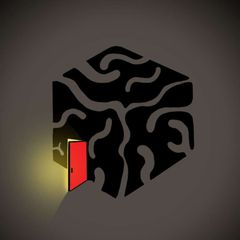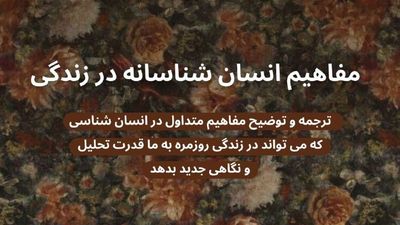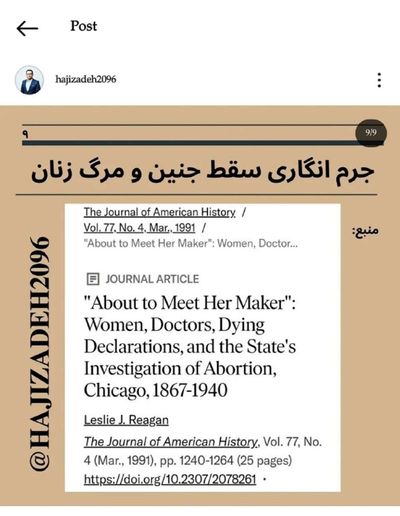
Реальний Київ | Украина

Лёха в Short’ах Long’ует

Україна Сейчас | УС: новини, політика

Труха⚡️Україна

Николаевский Ванёк

Реальна Війна | Україна | Новини

Лачен пише

Nairaland Pulse | News

Анатолий Шарий

Реальний Київ | Украина

Лёха в Short’ах Long’ует

Україна Сейчас | УС: новини, політика

Труха⚡️Україна

Николаевский Ванёк

Реальна Війна | Україна | Новини

Лачен пише

Nairaland Pulse | News

Анатолий Шарий

Реальний Київ | Украина

Лёха в Short’ах Long’ует

Україна Сейчас | УС: новини, політика

منابع بیگانه
Quotes
برای پیش و بیش از هرچیز با زیست پیشین خود، بیگانه شدن.
لینکهای مرتبط:
https://zil.ink/nira
ارتباط با من:
@nnkskhnmg
لینکهای مرتبط:
https://zil.ink/nira
ارتباط با من:
@nnkskhnmg
TGlist rating
0
0
TypePublic
Verification
Not verifiedTrust
Not trustedLocationІран
LanguageOther
Channel creation dateMay 08, 2025
Added to TGlist
Mar 17, 2025Records
04.04.202518:57
18.4KSubscribers11.05.202523:59
100Citation index11.05.202511:47
1.9KAverage views per post11.05.202511:47
2.3KAverage views per ad post16.04.202514:53
8.92%ER11.05.202513:28
10.24%ERRGrowth
Subscribers
Citation index
Avg views per post
Avg views per ad post
ER
ERR
Reposted from: دوزیپوس
دوزیپوس
06.05.202516:47
کتاب «یادمان رفته بود انسانیم»، مجموعه مقالات جاناتان شدلر منتشر شد.
مترجمان: سپهر مقصودی و رامین صبا
@Dosipus
مترجمان: سپهر مقصودی و رامین صبا
@Dosipus
14.05.202519:05
Mauss - The Gift.pdf
اگر علاقمندید اقتصاد رو درک کنید، این کتاب قدم بزرگی در این راهه.
اگر علاقمندید اقتصاد رو درک کنید، این کتاب قدم بزرگی در این راهه.
04.05.202517:21
🎙صوت نشست اول از سلسله نشستهای گزارش پژوهش میدانی:
🔸 مواجهه مذهبی با سرطان کودکان: گزارش یک پژوهش میدانی
سخنران: دکتر الهه غایبی
دکترای پرستاری و عضو هیات علمی دانشگاه علوم پزشکی مشهد
📚 برگزار شده توسط کارگروه انسان شناسی پزشکی، انجمن انسان شناسی ایران.
تاریخ برگزاری: ۳۰ دی ماه ۱۴۰۳
🔸 مواجهه مذهبی با سرطان کودکان: گزارش یک پژوهش میدانی
سخنران: دکتر الهه غایبی
دکترای پرستاری و عضو هیات علمی دانشگاه علوم پزشکی مشهد
📚 برگزار شده توسط کارگروه انسان شناسی پزشکی، انجمن انسان شناسی ایران.
تاریخ برگزاری: ۳۰ دی ماه ۱۴۰۳
04.05.202516:42
فایل شنيداري نشست چهارم از سلسله نشستهای زیستقومشناسی
عنوان نشست:
ارتباط انسان و گیاه در منطقه آسارا، رویکردی اتنوبوتانیک به دانش بومی استان البرز
با حضور:
مریم قوامیفرد
موسیالرضا غربی
🗓زمان: دوشنبه۲۹ اسفندماه ۱۴۰۳، ساعت ۱۲
📌مرکز ایدهپردازی دانشکده ادبیات و علوم انسانی دانشگاه حکیم سبزواری
//t.me/Iranianethnobiologists
عنوان نشست:
ارتباط انسان و گیاه در منطقه آسارا، رویکردی اتنوبوتانیک به دانش بومی استان البرز
با حضور:
مریم قوامیفرد
موسیالرضا غربی
🗓زمان: دوشنبه۲۹ اسفندماه ۱۴۰۳، ساعت ۱۲
📌مرکز ایدهپردازی دانشکده ادبیات و علوم انسانی دانشگاه حکیم سبزواری
//t.me/Iranianethnobiologists


03.05.202507:32
برای معلمها
12.05.202520:59
Radical alterity is just another way of saying “reality”: A reply to Eduardo Viveiros de Castro
David Graeber, London School of Economics
یکی از مقالاتی که بسیار بهش ارجاع میشه در توضیح اینکه آیا واقعا جادو عمل میکنه؟ چطور میتونیم با این مسئله برخورد کنیم و چطور قادر خواهیم بود آنچه که نمیفهمیم را توضیح دهیم؟
برای بحثهای فلسفی مربوط به جهانبینی انسانشناسانه این مقاله بسیار راهگشا و البته کمی سنگینه.
David Graeber, London School of Economics
یکی از مقالاتی که بسیار بهش ارجاع میشه در توضیح اینکه آیا واقعا جادو عمل میکنه؟ چطور میتونیم با این مسئله برخورد کنیم و چطور قادر خواهیم بود آنچه که نمیفهمیم را توضیح دهیم؟
برای بحثهای فلسفی مربوط به جهانبینی انسانشناسانه این مقاله بسیار راهگشا و البته کمی سنگینه.
13.05.202506:26
ویپ چگونه ریههای شما را از بین میبرد؟
A US teenager was recently reported to have developed the oddly named medical condition “popcorn lung” after vaping in secret for three years. Officially known as bronchiolitis obliterans, popcorn lung is a rare but serious and irreversible disease that damages the tiny airways in the lungs, leading to persistent coughing, wheezing, fatigue and breathlessness
https://www.lung.org/blog/popcorn-lung-risk-ecigs
https://theconversation.com/popcorn-lung-how-vaping-could-scar-your-lungs-for-life-254414
A US teenager was recently reported to have developed the oddly named medical condition “popcorn lung” after vaping in secret for three years. Officially known as bronchiolitis obliterans, popcorn lung is a rare but serious and irreversible disease that damages the tiny airways in the lungs, leading to persistent coughing, wheezing, fatigue and breathlessness
https://www.lung.org/blog/popcorn-lung-risk-ecigs
https://theconversation.com/popcorn-lung-how-vaping-could-scar-your-lungs-for-life-254414
10.05.202509:52
آیا به راستی شکار کاری مردانه و کاشت و برداشت کاری زنانهاست؟ این دوگانهسازی تا چه حد به آنچه که اتفاق میافتد نزدیک است؟ از انسانشناسان بپرسید.
https://www.sapiens.org/archaeology/hunting-gathering-fluidity-gender-roles/
https://www.sapiens.org/archaeology/hunting-gathering-fluidity-gender-roles/


26.04.202518:34
وبینار ضبط شد!
برای دیدن وبینار "مفاهیم انسانشناسانه در زندگی روزمره" میتوانید از طریق این لینک وارد یوتیوب شوید:
https://www.youtube.com/live/pMZWxTMmeS0?si=xzgigOi9dXClcvLj
برای دیدن وبینار "مفاهیم انسانشناسانه در زندگی روزمره" میتوانید از طریق این لینک وارد یوتیوب شوید:
https://www.youtube.com/live/pMZWxTMmeS0?si=xzgigOi9dXClcvLj
04.05.202516:39
📻 پادکست مردمشناسی پزشکی
فصل اول: رنج پزشکان
اپیزود ۴: رنج فرهنگی پزشکی - قسمت اول - نسخه تلگرام
@MedicalAnthropologyPod
🖋 پزشکی که سال ها در بستر فرهنگی دانشگاه و محیط آکادمی مشغول یادگیری پزشکی بوده است، حالا باید به جامعه برگردد و با انواعی از اقشار مردم، با فرهنگهای متفاوت و مخصوص به خودشان، عمیق ترین رابطههای انسانی را برقرار کند. شاید در فضای جامعهی امروز ما، یکی از انکارناپذیرترین چالشهای بین پزشکان و بیماران همین جدایی فرهنگی میان آن هاست.
در اپیزود چهارم، با خدیجه ظریفی درباره رنج فرهنگی پزشکی صحبت کردیم. رنجی که هر روزه و هر لحظه در اتاق پزشکان تکرار می شود و از قضا نه تنها پزشکان، که بیماران را هم رنج میدهد.
در این اپیزود، با دکتر ظریفی درباره خاطرات متعددی که در طی همه این سالها داشتهاند، صحبت کردیم. درباره دیوار فرهنگی میان پزشکان و بیماران. درباره سالهای متمادی فعالیت در حوزه طبابت و آموزش عمومی پزشکی و البته خیلی چیزهای دیگر... .
در فصل اول پادکست مردمشناسی پزشکی، میخواهیم کمی به رنج پزشکان گوش دهیم...
@MedicalAnthropologyPod
فصل اول: رنج پزشکان
اپیزود ۴: رنج فرهنگی پزشکی - قسمت اول - نسخه تلگرام
@MedicalAnthropologyPod
🖋 پزشکی که سال ها در بستر فرهنگی دانشگاه و محیط آکادمی مشغول یادگیری پزشکی بوده است، حالا باید به جامعه برگردد و با انواعی از اقشار مردم، با فرهنگهای متفاوت و مخصوص به خودشان، عمیق ترین رابطههای انسانی را برقرار کند. شاید در فضای جامعهی امروز ما، یکی از انکارناپذیرترین چالشهای بین پزشکان و بیماران همین جدایی فرهنگی میان آن هاست.
در اپیزود چهارم، با خدیجه ظریفی درباره رنج فرهنگی پزشکی صحبت کردیم. رنجی که هر روزه و هر لحظه در اتاق پزشکان تکرار می شود و از قضا نه تنها پزشکان، که بیماران را هم رنج میدهد.
در این اپیزود، با دکتر ظریفی درباره خاطرات متعددی که در طی همه این سالها داشتهاند، صحبت کردیم. درباره دیوار فرهنگی میان پزشکان و بیماران. درباره سالهای متمادی فعالیت در حوزه طبابت و آموزش عمومی پزشکی و البته خیلی چیزهای دیگر... .
در فصل اول پادکست مردمشناسی پزشکی، میخواهیم کمی به رنج پزشکان گوش دهیم...
@MedicalAnthropologyPod
Reposted from: انسانشناسی
انسانشناسی
07.05.202518:54
انسانشناسیِ احساسات یا anthropology of emotions
یکی از زیرشاخههای مطالعات انسانشناسی که به طور کلی با مطالعهی احساسات در فرهنگها و گروههای متفاوت نشان میدهد چطور احساساتی که تجربه میکنیم، زیرساختی فرهنگی-اجتماعی دارند و ما اگر تعریف فرهنگیای برای یک احساس نباشیم قادر نیستیم آن را بشناسیم، به آن بها دهیم و از آن تجارب متنوعی کسب کنیم، این تنها زمانی امکان دارد که توضیحی فرهنگی - اجتماعی دررابطه با آن احساس به خصوص داده شود. احساساتی وجود دارند که در فرهنگهای متنوع، ساختارهای متنوعی دارند یا که تنها به یک فرهنگ اختصاص پیدا میکنند. این مطالعات به ما کمک میکنند تا متوجه شدیم احساسات نیز به معنای کلی، جهانشمول نیستند و درک آنان تنها زمانی ممکن است که آن را تجربه کنیم و توضیحی فرهنگی برای آن داشته باشیم.
مطالعهی بیشتر:
https://www.annualreviews.org/content/journals/10.1146/annurev.an.15.100186.002201
https://www.jstor.org/stable/656565
https://www.anthroencyclopedia.com/article-search?search_api_views_fulltext=Emotion&field_subject_area=All&sort_by=search_api_relevance
یکی از زیرشاخههای مطالعات انسانشناسی که به طور کلی با مطالعهی احساسات در فرهنگها و گروههای متفاوت نشان میدهد چطور احساساتی که تجربه میکنیم، زیرساختی فرهنگی-اجتماعی دارند و ما اگر تعریف فرهنگیای برای یک احساس نباشیم قادر نیستیم آن را بشناسیم، به آن بها دهیم و از آن تجارب متنوعی کسب کنیم، این تنها زمانی امکان دارد که توضیحی فرهنگی - اجتماعی دررابطه با آن احساس به خصوص داده شود. احساساتی وجود دارند که در فرهنگهای متنوع، ساختارهای متنوعی دارند یا که تنها به یک فرهنگ اختصاص پیدا میکنند. این مطالعات به ما کمک میکنند تا متوجه شدیم احساسات نیز به معنای کلی، جهانشمول نیستند و درک آنان تنها زمانی ممکن است که آن را تجربه کنیم و توضیحی فرهنگی برای آن داشته باشیم.
مطالعهی بیشتر:
https://www.jstor.org/stable/646350
https://www.annualreviews.org/content/journals/10.1146/annurev.an.15.100186.002201
https://www.jstor.org/stable/656565
https://www.anthroencyclopedia.com/article-search?search_api_views_fulltext=Emotion&field_subject_area=All&sort_by=search_api_relevance
15.05.202505:31
Reposted from: نیما اورازانی|ناروانشناس اجتماعی در جستجوی رهایی
نیما اورازانی|ناروانشناس اجتماعی در جستجوی رهایی


02.05.202523:07
آیا روانشناسی میتواند علیه زندگی کار کند؟
در این گفتار کوتاه در مورد ساختارهایی صحبت میکنم که روانشناسی از طریق آن؛ علیه زندگی کار میکند.
مشاهده ویدئو
در این گفتار کوتاه در مورد ساختارهایی صحبت میکنم که روانشناسی از طریق آن؛ علیه زندگی کار میکند.
مشاهده ویدئو
04.05.202516:39
📻 پادکست مردمشناسی پزشکی
فصل اول: رنج پزشکان
اپیزود ۵: رنج فرهنگی پزشکی - قسمت دوم - نسخه تلگرام
@MedicalAnthropologyPod
🖋 در ادامه اپیزود قبل، با خدیجه ظریفی درباره رنج فرهنگی پزشکی صحبت کردیم. رنجی که هر روزه و هر لحظه در اتاق پزشکان تکرار می شود و از قضا نه تنها پزشکان، که بیماران را هم رنج میدهد.
در طی اپیزود پنجم که بخش دوم و درواقع پایانی گفت و گوی ماست، باز هم با دکتر ظریفی درباره خاطرات متعددی که در طی همه این سالها داشتهاند، صحبت کردیم: از پزشکی تدافعی گرفته تا رابطه پدرسالاری نطام سلامت با کارکنانش و البته چندین و چند موضوع دیگر...
پ.ن: بخشهایی از این اپیزود شامل روایتهایی با محتوای خشونتآمیز است که ممکن است برای برخی از شنوندگان آزاردهنده باشد. لطفاً در صورت حساسیت به چنین موضوعاتی با احتیاط گوش دهید.
در فصل اول پادکست مردمشناسی پزشکی، میخواهیم کمی به رنج پزشکان گوش دهیم...
@MedicalAnthropologyPod
فصل اول: رنج پزشکان
اپیزود ۵: رنج فرهنگی پزشکی - قسمت دوم - نسخه تلگرام
@MedicalAnthropologyPod
🖋 در ادامه اپیزود قبل، با خدیجه ظریفی درباره رنج فرهنگی پزشکی صحبت کردیم. رنجی که هر روزه و هر لحظه در اتاق پزشکان تکرار می شود و از قضا نه تنها پزشکان، که بیماران را هم رنج میدهد.
در طی اپیزود پنجم که بخش دوم و درواقع پایانی گفت و گوی ماست، باز هم با دکتر ظریفی درباره خاطرات متعددی که در طی همه این سالها داشتهاند، صحبت کردیم: از پزشکی تدافعی گرفته تا رابطه پدرسالاری نطام سلامت با کارکنانش و البته چندین و چند موضوع دیگر...
پ.ن: بخشهایی از این اپیزود شامل روایتهایی با محتوای خشونتآمیز است که ممکن است برای برخی از شنوندگان آزاردهنده باشد. لطفاً در صورت حساسیت به چنین موضوعاتی با احتیاط گوش دهید.
در فصل اول پادکست مردمشناسی پزشکی، میخواهیم کمی به رنج پزشکان گوش دهیم...
@MedicalAnthropologyPod
Log in to unlock more functionality.
















